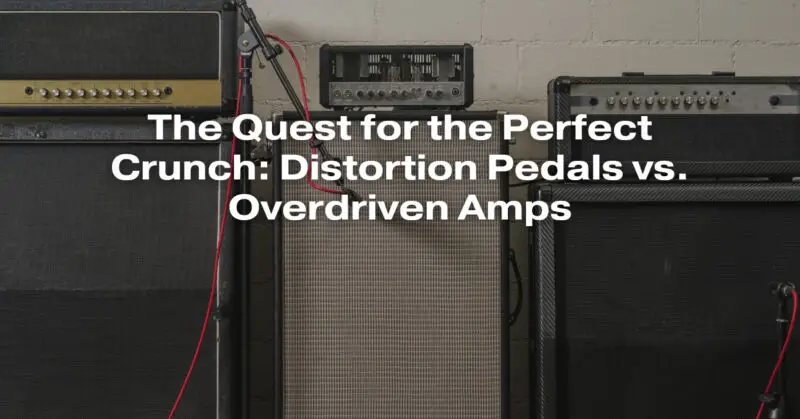The quest for the perfect crunch tone is a journey that many guitarists embark upon, and it often involves a choice between distortion pedals and overdriven amps. Both methods have their merits and can deliver fantastic crunch tones, but they offer different characteristics and nuances. Let’s explore the distinctions between distortion pedals and overdriven amps to help you make an informed choice:
Distortion Pedals:
- Precision and Consistency: Distortion pedals provide precise control over your tone. They offer a consistent and predictable distortion level, making them ideal for achieving a specific sound.
- Versatility: Distortion pedals come in various types, from classic distortion to high-gain options. This versatility allows you to choose a pedal that matches your preferred style and genre.
- Ease of Use: Distortion pedals are user-friendly. You can simply step on the pedal to engage the distortion, and they often have adjustable parameters like gain, tone, and level for fine-tuning your sound.
- Layering Effects: Distortion pedals can be used in conjunction with other pedals (e.g., delay, reverb, modulation) to create complex and textured sounds. This makes them suitable for players who enjoy experimenting with effects chains.
- Portability: Distortion pedals are compact and easy to transport, making them a convenient choice for gigging musicians.
Overdriven Amps:
- Natural and Organic Tone: Overdriving your amplifier produces a natural and organic crunch tone. Many guitarists favor this approach for its warmth and responsiveness to playing dynamics.
- Amp Character: Each amplifier has its unique overdrive character, which is influenced by factors like tube type, wattage, and speaker configuration. Finding the right amp can lead to a signature tone.
- Dynamic Response: Overdriven amps respond dynamically to your playing style, offering a wide range of tonal possibilities based on your picking attack and guitar volume control adjustments.
- Volume Control: You can achieve different levels of overdrive by varying your amp’s volume control, allowing you to transition from clean to crunch by adjusting your guitar’s volume knob.
- Tonally Rich: Overdriven amps often produce harmonically rich and complex tones that can enhance the overall musicality of your sound.
Considerations for Your Choice:
- Playing Style: Your playing style and the genres you play can influence your choice. Distortion pedals may be more versatile for achieving high-gain sounds, while overdriven amps excel at classic rock, blues, and vintage tones.
- Budget: Distortion pedals can be a cost-effective way to achieve a crunchy tone, while high-quality overdriven amps can be more expensive.
- Portability: If you need a portable and flexible solution, distortion pedals are a convenient choice. On the other hand, if you prefer a consistent, integrated setup, an overdriven amp might be better.
- Tone Quest: Experimentation is key. Try both distortion pedals and different overdriven amps to find the combination that best suits your tonal preferences.
In the end, the “perfect” crunch tone is subjective and depends on your personal preferences and musical goals. Many guitarists incorporate both distortion pedals and overdriven amps into their setups to cover a wide range of sounds. Ultimately, the choice between the two should be based on your playing style, sonic preferences, and practical considerations.

